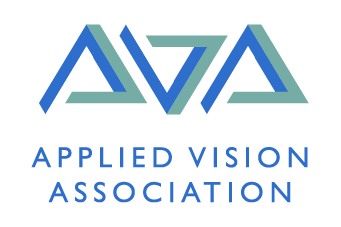

Investigating the Role of Microsaccades in Object Recognition
Supervisors: Ben Tatler, Jasna Martinovic
Research Project
Rotating 2D objects with a predominant environmental orientation has been found to produce delays in tasks requiring basic-level classification, such as object naming tasks, but not in superordinate categorisation tasks (e.g. living/non-living; Jolicoeur, 1985; Dickerson & Humphreys, 1999). This pattern of delays is thought to support the notion that rotated images require some form of view normalisation before basic-level category information can be accessed (i.e. recognition is view-dependent), but less specific superordinate information can be derived from rotated images (i.e. recognition is view-independent).
EEG studies found that misorientation also produced delays in induced gamma band activity, which was traditionally linked with processes such as object representation and attention (Martinovic et al., 2007; 2008). However, it was subsequently found that the peaks in gamma band activity were contaminated with microsaccade artefacts (Yuval-Greenberg et al., 2009). A re-analysis of the data from Martinovic et al. confirmed that microsaccadic artefacts showed a similar-sized delay brought on by misorientation (Martinovic, personal communication). This then leads to the possibility that microsaccades reflect early representational processes such as view normalisation and therefore may contribute to object recognition.
Our study was set up to investigate the potential role of microsaccades in object recognition through three experiments: First, viewing thresholds of upright objects were measured to obtain a baseline measurement of a perceptual-level bottleneck for basic-level object recognition. Second, the speed of naming (i.e. basic-level categorisation) and the speed of living/non-living classification (superordinate categorisation) for upright and misoriented objects was measured in two separate tasks, both of which also involved eye tracking. This design allowed us to investigate the effect of misorientation in view-dependent and view-independent tasks, as well as determine whether microsaccades correlate with the delays seen in naming times, and whether any of these reflect perceptual-level constraints to object recognition reflected in viewing thresholds.
Over the course of designing the study we encountered a number of methodological challenges, which we had to work through to produce an effective study. A particular challenge was implementing the naming task, as having participants say the name of the object out loud would have resulted in head movements and therefore disrupted the eye tracking. After considering several options we decided to use a simple button press response according to the first letter of the object name, using letter groups A-G and H-Z as alternatives due to the overlearning of the first seven alphabets in native English speakers. Furthermore, during piloting we discovered an unexpected issue with using a standard white noise mask, and a new custom mask had to be produced for the viewing threshold experiment to be successful. We also had the challenge of finding a way to allocate participants in each task in order to overcome practice effects in a within-subjects design as the misorientation effect reduces for familiar objects. We tested 12 participants in total, which allowed us to cover three different orientations, and two subsets of stimuli without losing the misorientation effect.
In terms of analysis, we will correlate the viewing thresholds with naming and categorisation speed across items and orientations, to investigate the effect of misorientation in both view-dependent and view-independent tasks. Further, naming times will be modelled separately with both saccades and viewing duration data, to determine whether these factors correlate with each other or contribute to the naming delays independently. Perhaps surprisingly, preliminary analysis revealed no effect of orientation on first saccade latencies or amplitudes in the naming task, despite finding a delay in manual reaction times for the misoriented objects. There for no manual RT delays in the categorisation task – However, larger first saccade amplitudes were found for the ‘living’ than the ‘non-living’ category. Further analysis will be conducted to locate the origin of these effects.
My internship experiences
I was very lucky to work with supporting and helpful supervisors, who were always willing to answer my questions and offer their help, but who also nurtured independence, so I could learn by doing. With their help I acquired and developed several technical and non-technical skills, which will be extremely valuable for any further research I undertake.
Technical skills
Non-technical skills
Furthermore, I was able to use my internship experience to enrol in a Work Related Learning course offered by the University of Aberdeen. This required me to pinpoint and focus on four attributes I would like to improve during the internship – I chose to work on the following attributes: ‘an ability to participate in the creation of new knowledge and understanding through research and inquiry’, ‘an ability to communicate effectively for different purposes and in different contexts’, ‘an ability to work independently and as part of a team’, and finally ‘a capacity for self-reflection, self-discovery and personal development’. I feel like with the help of my supervisors I was able to work on each of these qualities, and through that greatly enhance my employability.